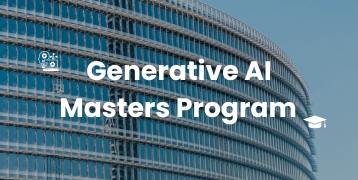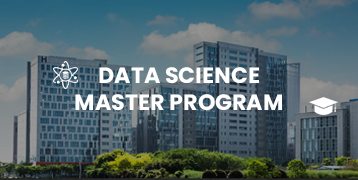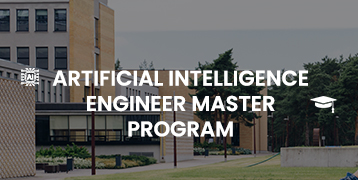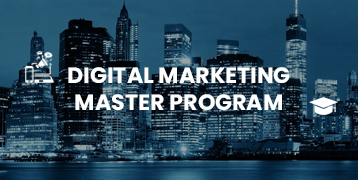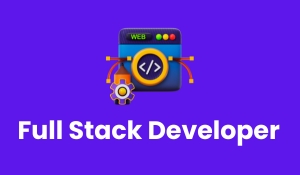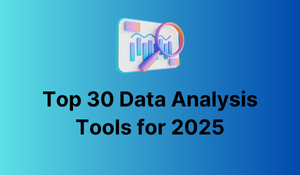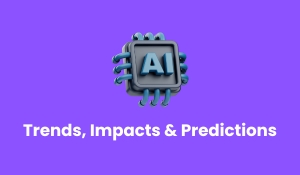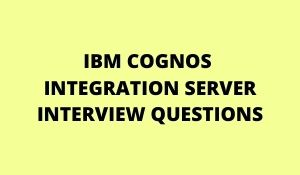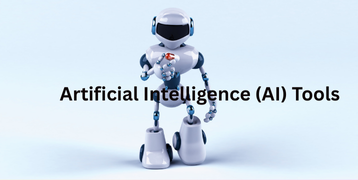
Introduction:
The goal of artificial intelligence (AI) is to create technologies that can execute tasks that require human intelligence. It is divided into two categories: narrow AI, which is developed for specific tasks, and general AI, which aims to understand, acquire, and apply intelligence across an array of tasks. Natural language processing, machine learning, visual analysis, and algorithmic learning are subfields of artificial intelligence. Artificial intelligence (AI) technologies are making ways to integrate into everyday activities, improve efficiency, provide new features, and inspire creativity.

What is AI Tools?
Artificial intelligence (AI) tools such as image recognition, automation of robotic processes, natural language processing, and machine learning are changing several sectors by analyzing data, making decisions, and translating languages naturally. These technologies are transforming industries and expanding their applications due to complex algorithms and powerful computers. A field of artificial intelligence called machine learning (ML) utilizes statistical models and algorithms that enhance task performance. It uses strategies such as machine learning, trained learning, and autonomous learning to find patterns in data and give estimates. Another crucial field of artificial intelligence is natural language processing (NLP), which focuses on how computers and human language interact. It is used in chatbots, sentiment analysis, language translation, and speech recognition technologies. AI including computer vision and robotic process automation is employed in various industries for surveillance and threat detection.
Here, GoLogica can provide some AI tools. These artificial intelligence (AI) tools are expertly chosen and arranged according to their main functions:
• ChatGPT
• Google Bard
• ChatSonic
• TensorFlow
• H20: Artificial Intelligence
• PyTorch
• Theano
• Caffe
• Midjourney
• Keras
• Alli AI
• DataRobot
• Paradox
• Scikit-learn
• DeepBrain
• ChatGPT:
ChatGPT is an AI language model, it is flexible in customer service, business, and education, as it is based on the GPT-4 architecture and can understand, and generate text that resembles human speech. ChatGPT a valuable tool by OpenAI, offers accurate, speedy, and customized learning capabilities, reducing, operating, expenses and enhancing user experience, ensuring responsible use. With its continuous growth, ChatGPT is a dynamic AI tool that is transforming various industries and opening up possibilities for innovative artificial intelligence.
Google Bard:
Google Bard is an advanced AI language model that interacts effectively with users utilizing deep learning. It is useful for businesses to improve customer service, outsource content development, and provide personalized user experiences since it generates high-quality, integrated text across various domains. Bard integrates with Google’s extensive knowledge base, providing accurate and reliable information. Its training uses a comprehensive dataset for diverse inquiries. Google prioritizes user safety and ethical considerations in Bard’s development, ensuring a secure and trustworthy user experience. Google Bard is a significant advancement in conversational AI, set to revolutionize technology interaction and enhance digital communication.

ChatSonic:
ChatSonic is an advanced AI tool for digital communication, offering advanced capabilities beyond text generation. Its key strength lies in generating accurate, context-aware responses, making it ideal for customer service applications, and enhancing user engagement and customer satisfaction. ChatSonic is a versatile tool that integrates visual elements, generating images, voice responses, and videos alongside text. It’s ideal for content creators, marketers, and educators, offering creativity and precision. It’s built with user safety in mind, ensuring secure interactions. ChatSonic is at the forefront of AI, pushing boundaries in conversational AI.
TensorFlow:
An open-source machine learning framework called TensorFlow offers a flexible platform for deep learning model development. Due to its scalability, models can be executed on huge clusters or a single device. TensorFlow Hub is a repository of models with training that lets users leverage research without having to start from scratch and speeds up development. It is compatible with TensorFlow.js and TensorFlow Lite, among other tools. TensorFlow is still evolving, integrating new advancements in AI and fostering creativity in many sectors. TensorFlow is a versatile machine learning framework utilized in various industries, such as image and video recognition, natural language processing, speech recognition, recommendation systems, healthcare, robotics, autonomous systems, generative models, edge and mobile AI, and academic research. Its flexibility, scalability, and community support drive innovation and push machine learning boundaries.
H20: Artificial Intelligence:
H2O.ai is an expert in artificial intelligence transformation, providing powerful tools and algorithms to develop successful machine learning frameworks. The process of creating a model is simplified by its design and H2O-3 software, which covers data preparation, validation, and installation. An open-source platform, H2O.ai uses distributed computing to handle large data sets and complex models efficiently. It provides performance and scalability, promoting effective data management and insights instruction. High-performing models require less time and effort because H2O Robotic AI automates many aspects of the machine learning process.
PyTorch:
The popular deep learning framework PyTorch, which includes a dynamic functional graph, was developed by Facebook’s AI Research group. The debugging process and testing with models are made easy by its user-friendly interface and real-time network design, which is very helpful for development and research. PyTorch is an easy-to-use framework with a simple syntax that makes development and testing move more efficiently. Complex neural network implementation is made easier by its broad collection of already-developed components.
PyTorch is a versatile framework with a robust community and extensive documentation, ideal for deep learning applications. It works with popular libraries like NumPy, TorchVision, and ONNX, offering ease of use and community support.

• Theano:
Theano, a deep learning framework developed by MILA at the University of Montreal, has significantly influenced machine learning. It optimizes mathematical expressions for deep learning algorithms, enabling efficient computations in multi-dimensional arrays. Its advanced techniques, like symbolic differentiation, speed up computations for complex neural networks and large datasets. Theano is a deep learning framework that can run computations on both CPU and GPU, accelerating the training process. Its symbolic expression framework allows users to define mathematical expressions symbolically, enhancing computational performance and flexibility. Theano has strong community support and comprehensive documentation, influencing the development of other prominent libraries like Keras. Its principles can still be useful for learning newer frameworks like TensorFlow and PyTorch. Theano, a key deep learning framework, offers optimization, GPU acceleration, and a symbolic expression framework, influencing machine learning evolution and providing inspiration for newer frameworks.
• Caffe:
The Berkeley Vision and Training Center created the fast and modular Caffe deep learning framework. It is frequently used in computer vision, segmentation, and classification applications for images. Caffe’s exceptional speed, optimized for CPU and GPU, makes it ideal for large datasets and complex models. Caffe’s modular architecture allows users to define models as interconnected layers, simplifying the process of building and modifying neural networks. Its strong community support and comprehensive documentation enhance its usability, providing a wealth of pre-trained models, tutorials, and resources. This support network ensures quick solutions and leverages existing knowledge to advance projects. Caffe is a powerful and efficient deep learning framework, particularly suited for computer vision applications. Its compatibility with popular machine learning libraries like MATLAB and Python allows for seamless integration. Caffe’s robust visualization capabilities, including tools for neural network architecture, training progress monitoring, and performance metrics analysis, provide valuable insights for model fine-tuning and improved results.
Midjourney:
Midjourney is an artificial intelligence program that produces attractive visual content using innovative machine-learning techniques. It creates original artwork of high caliber by expanding the creation process and allowing users to enter fundamental descriptions. This promotes the creative process by making professional-caliber designs available to anyone with little to no artistic skills. With the help of multiple iterations and real-time results, users can improve their designs using Midjourney as an adjustable tool. By allowing users to experiment with different looks and elements, this sequential method increases greater involvement in the imaginative effort. Midjourney can be used for a variety of functions, as it accepts a broad spectrum of artistic techniques. With its easily accessible and simple-to-operate design, Midjourney is an AI-powered creative platform that helps users pick up the fundamentals fast and get innovative. It is a priceless tool for designers, artists, and content manufacturers, supporting machine learning for creative innovation through shared galleries and collaborative interactions.
| Course Name | Enroll Now |
|---|---|
| Artificial Intelligence Engineer Masters Program | Enroll Now |
| Deep Learning with TensorFlow Training | Enroll Now |
| Machine Learning Masters Program | Enroll Now |
| AI and Machine Learning in Finance Training | Enroll Now |
| Applied Data Science with Python Training | Enroll Now |
Keras:
Python-based Keras is an API for high-level neural network programming that makes deep learning development of models easy and supports quick verification. It abstracts complexity and offers powerful resources for developing and executing complicated models, making the process easier for both beginner and experienced developers. Keras modularity allows for creativity in model design and experimentation. Its API consists of standalone modules, including neural layers, cost functions, optimizers, and activation functions. It works using both CPU and GPU processing, enabling many backends and operating effectively on TensorFlow, Microsoft’s CNTK, or Theano. With an array of instructions, pre-trained models, code examples, and documentation, Keras is a straightforward yet powerful deep-learning tool.
Alli AI:
Alli AI is a technology designed to assist businesses in improving their web visibility and rankings by automating search engine optimization (SEO) tasks. It saves time and maintains consistent and efficient SEO strategies on a website by using powerful AI algorithms to simplify the process, allowing marketers to focus on strategy and content generation. With a user-friendly interface, even marketers with little technical experience can optimize their websites for SEO. It enhances SEO and provides small businesses with a competitive edge through practical insights and recommendations. Real-time analytics and reporting enable quick responses to changes in the digital landscape. Alli AI is an effective tool for optimizing and automating SEO projects due to its capacity for continuous improvement. With adaptability, instant data analysis, automation capabilities, and ease of use, it is an essential tool for companies seeking effective growth in the digital technology world.
DataRobot:
DataRobot simplifies AI model creation, implementation, and maintenance for a wider demographic, requiring minimal data science knowledge, making it an automated platform for machine learning models. To increase efficiency and speed, it automates validation, feature design, model development, hyperparameter adjustment, and data preprocessing. Additionally, the platform allows businesses to simultaneously manage and monitor multiple designs through model selection and optimization. Users with different levels of expertise can utilize its easy interface, accelerating the process of deploying and monitoring models. DataRobot is an adaptable solution for various technology platforms, offering integrity and flexibility with different data sources.
Paradox:
AI-powered “Olivia” has been utilized by Paradox to automate tasks, improve candidate engagement, and speed up the recruitment process. By simplifying procedures like resume screening, organizing interviews, and assessments, this technology allows HR personnel to focus on strategic projects. It easily connects with modern HR systems and offers data-driven insights for smart recruitment decisions.
Scikit-learn:
A Python machine learning framework called Scikit-learn offers several methods for data mining and analysis, such as dimensionality reduction, aggregation, regression analysis, and classification. It interfaces with other libraries like Pandas and Seaborn and is easy to use and efficient. It is the foundation of Python machine learning and provides significant capabilities for both beginners and experts.

DeepBrain:
DeepBrain AI creates hyper-realistic virtual humans using AI, deep learning, and natural language processing, transforming customer service, education, and entertainment industries. These scalable, personalized experiences offer consistent service across time zones and languages and can be seamlessly integrated into existing systems without significant infrastructure changes.
Conclusion:
Artificial intelligence (AI) is transforming different sectors including the automated execution of complex jobs, improvement of processes for making decisions, and simplification of machine-to-human interaction. This appears in industries like manufacturing, retail, medical care, and finance. With the ability to expand quickly, artificial intelligence (AI) has started the next phase of technological innovation. AI-powered supply networks, self-driving automobiles, and completely autonomous devices could result from it. The impact of artificial intelligence is also being increased by its collaboration with modern technologies like blockchain, quantum computing, and the World Wide Web of objects. Internet of Things devices powered by AI can make settings more responsive, while blockchain technology can improve security. Quantum computing could enhance AI’s processing capabilities, enabling breakthroughs in drug discovery, climate modeling, and materials science, but challenges like data privacy and algorithmic bias require regulatory consideration.









